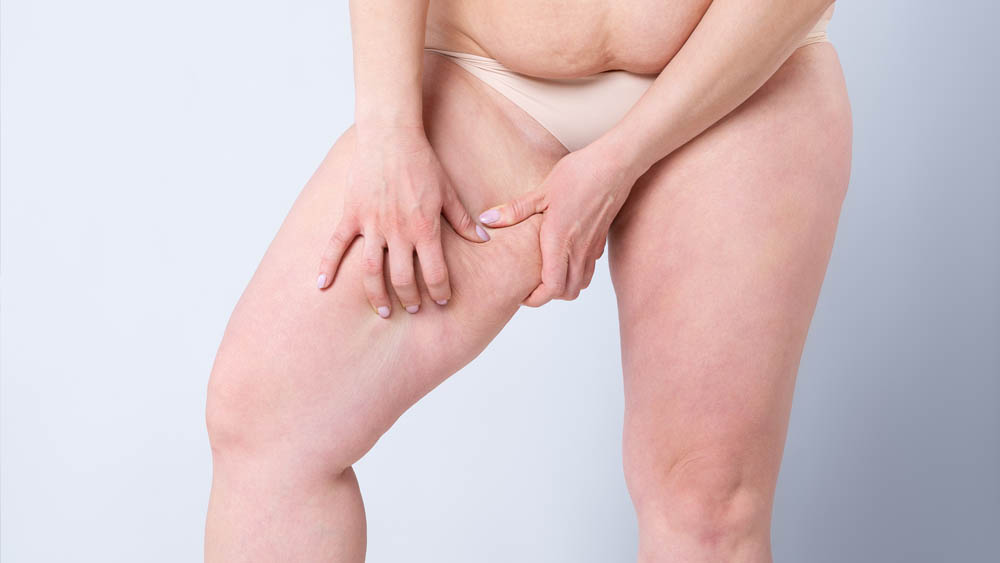Do I Have Lipedema? When Dieting Doesn’t Work
GET DIAGNOSED
Share on facebook
Facebook
Share on twitter
Twitter
Share on linkedin
LinkedIn
If you’ve been noticing unexplained weight gain, specifically in the lower body, that doesn’t respond to diet, exercise, or lifestyle changes, as well as spongy, painful pockets of skin, you may be experiencing the beginning stages of lipedema.
Lipedema is an acute fat deposition disorder that affects roughly 11% of the population, primarily women. While lipedema is slowly gaining awareness, unfortunately, it’s still a poorly misunderstood and misdiagnosed disorder that routinely gets mistaken for obesity or lymphedema – a dysfunction of the body’s lymphatic system that compromises optimal lymph flow one or multiple extremities with symptoms of pain and subsequent swelling. Interestingly, lipedema is not as recognized in the United States as in other regions of the world. Often, lipedema is triggered by hormonal fluctuations, such as puberty, pregnancy, or menopause. Most women experience the first signs of lipedema sometime in their 30s. Since the adverse effects of lipedema progress and worsen overtime if left untreated, lipedema is not as easily diagnosed in its early stages. Often, a patient is already in the latter stages before a proper diagnosis is determined. Those experiencing the early stages of the disorder are often directed by doctors to tweak their lifestyle habits, such as dieting and exercising, only to be left feeling frustrated when their accumulating fat doesn’t budge to eating right and working out.
Early Signs of Lipedema: What to Look For
If you have been experiencing any one of the following symptoms, you may be in the early stages of lipedema and should seek a full medical evaluation to rule out any other health issues:
- Legs appear symmetrically swollen from hips down to ankles, oddly sparing the feet, and assume a characteristically column-like look
- Skin in the affected areas feels cool to the touch and spongy
- Skin begins to bruise easily
- Lower body disproportionately overweight to upper body and doesn’t respond to sound dietary, exercise, and lifestyle changes
- Simple movements, such as walking, begin becoming painful and burdensome
If the aforementioned indications are left untreated, the patient will begin to experience skin laxity/loss of firmness, bulging, visible veins, painful, nodular fat in affected areas, fatigue, heaviness of the legs, decreased mobility/joint movement, and compromised quality of life. Though lipedema is surprisingly a common disorder, it’s not commonly known or understood, ironically. Therefore, it’s often misdiagnosed as being obesity, lymphedema, or another disease. Often, lipedema is diagnosed based on a clinical evaluation from a physician with specific knowledge and experience of the fat deposition disorder, including supporting tests that categorically rule out other diagnoses. It’s recommended you seek the expertise of a board-certified doctor who specializes in treating lipedema for best treatment results.
Tests to Help Determine a Lipedema Diagnosis
Though not definitive, there are a few technological advancements that can help determine a lipedema diagnosis. The following tests can be conducted to rule out any other related diseases/disorders and have been shown to properly diagnose a lipedema patient:
- Venous Doppler Ultrasound
A painless, non-invasive assessment that determines venous insufficiency. Though this test is often conducted while the patient is in a standing position, it can also be performed while the patient is lying down.
- Lymphoscintigraphy
A nuclear scan that assesses the functionality of the entire lymphatic system and is usually conducted in more complicated cases where a clinical diagnosis may be ambiguous.
Above all, a proper lipedema diagnosis requires physical examination of the patient, such as visible skin swelling, ankle and wrist cuffs, nodular fat pockets, and other lipedema characteristics. Medical history is also considered in determining a diagnosis, as the origins of lipedema are believed to be genetic in many cases.
Conclusion
If you feel you may be experiencing the early signs of lipedema and wish to book a consultation with leading lipedema specialist, Dr. Jamie Schwartz, please call our office to speak with any one of our knowledgeable team members. As with most health challenges, early detection is key to the successful management and treatment of symptoms. Please don’t wait. We’re here to help.
To learn more, please contact our Beverly Hills, California office to schedule a consultation with any of our highly trained specialists

